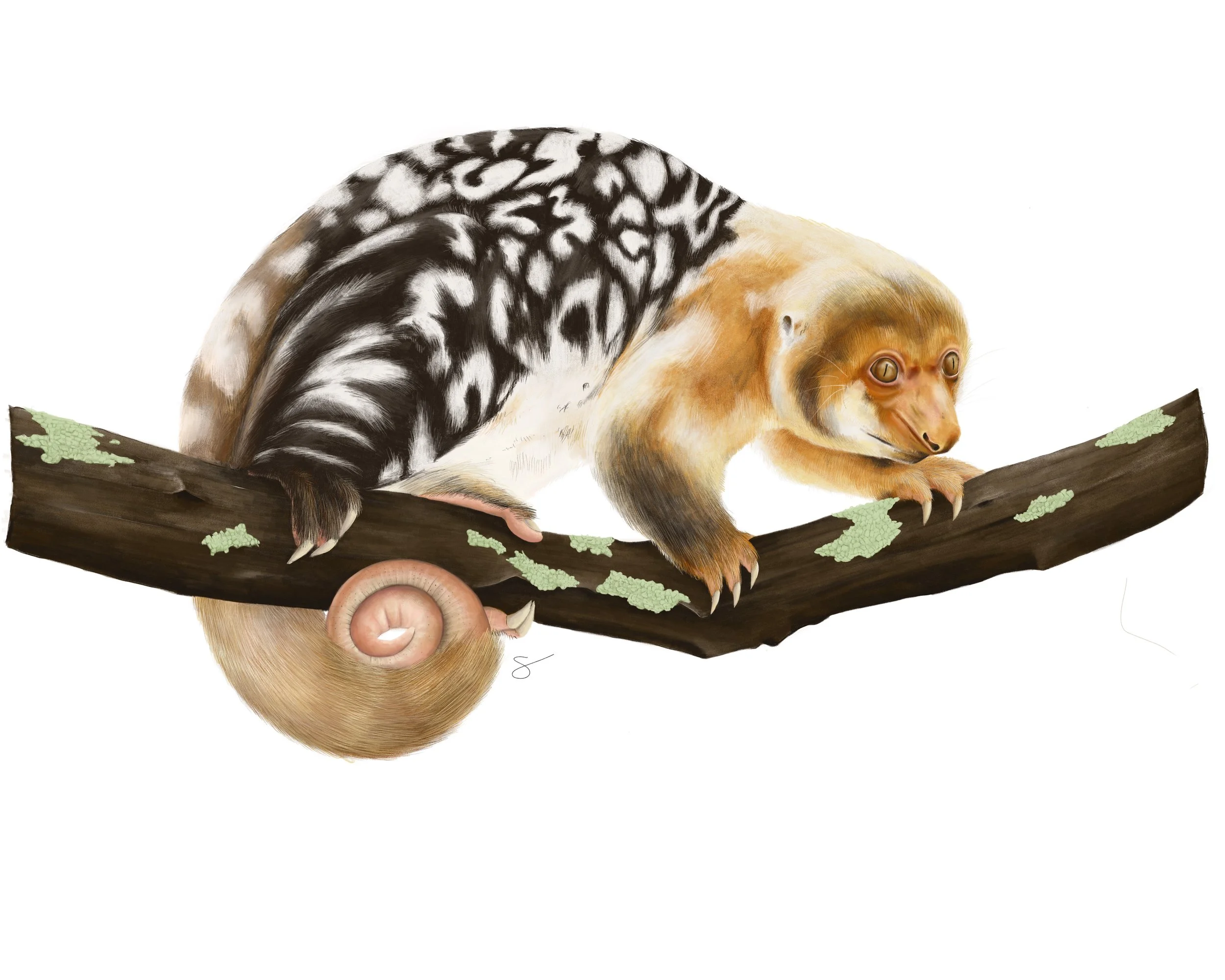Animals in Asmat
Illustrations by Sarah Nelson
Commissioned by the American Museum of Asmat Art
Cuscus
Cassowary
Flying Fox
Cuscus
Cuscus are found in New Guinea and parts of Australia. There are several different species of this marsupial. One of the rarest and most dynamic is the black-spotted cuscus.
The cuscus is a nocturnal animal that spends most of its time in the rainforest canopy. It has opposable digits and a prehensile tail with leathery patches near the tip that help grip tree branches. Females are pouched and give birth to one or two young at a time. Cuscus are important for dispersing fruit seeds and keeping down certain pest populations.
New Guineans hunt cuscus for meat and use its thick fur to make headbands and other body ornamentation. Their habitat is currently under threat due to deforestation as the result of logging and agriculture.
Sarah Nelson is an artist and illustrator based out of Los Angeles. She is working with the AMAA to depict plant and animal species from the Asmat region in efforts to show connections between art, culture, and the natural environment.
Cassowary
The southern cassowary is a large, flightless bird found in Australia, New Guinea, and on other nearby islands. These birds have bright blue necks and a large casque on their heads made of keratin. They can run up to 31 miles per hour and have daggerlike nails, which makes them one of the fiercest animals in the Asmat region.
Cassowaries eat mainly fruits and play an essential role in their native ecosystems by distributing seeds across the rainforest floor. There are hundreds of plant species that can germinate only if passed through a cassowary’s digestive tract.
These birds are prized for their bones, meat, and feathers in New Guinea. They appear in Asmat myths and are used to create various forms of visual culture in the region such as headbands, necklaces, and skirts. Cassowary numbers are declining due to a loss of habitat and encroaching human populations.
Flying Fox
Flying foxes have a wingspan of almost 5 feet and are the largest bats. There are many different species of flying foxes, which can be found from islands in the Indian Ocean to the western Pacific.
These bats roost in large numbers and rely mainly on their sight instead of using echolocation. Flying foxes have large eyes that help detect fruit through the identification of colors, shapes, and patterns. The bats have no tails and their bodies are covered in dense fur. They are mostly restricted to forest habitats and are important for pollinating the native trees and shrubs upon which many other animals in New Guinea depend.
Flying fox symbols and depictions of other fruit-eating animals are commonly found on Asmat panels and shields. These bats are under threat due to their interactions with farmers. They can also be hunted for meat and are often displaced due to deforestation.




